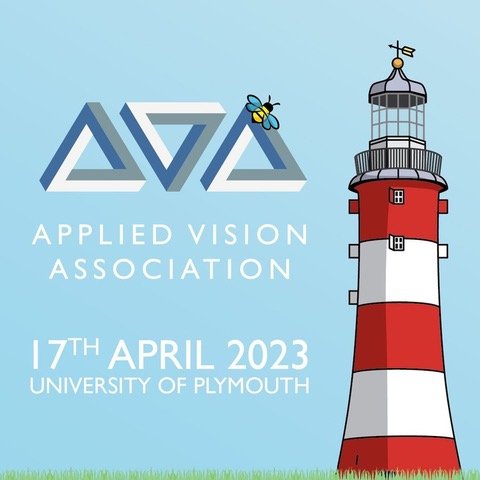The Pint Glass Illusion: Exploring the misjudgement of curvature and length for two and three-dimensional objects
Gunnar Schmidtmann
Humans are exquisitely sensitive in curvature detection and discrimination, but misjudge the extent of curvature. A largely unexplored phenomenon is the underestimation of the circumference length of curved objects. Anecdotal, and some experimental evidence (Rivera-Aparicio & Firestone, 2018 J Vision 18(10) 1318-1318) suggests that when comparing the circumference of a Pint glass to its height, subjects significantly underestimate the circumference (Pint Glass Illusion, PGI). I present results from two experiments exploring the dependence of the PGI on segment length and type of curve for 2D and 3D shapes. (i) 10 subjects were presented with circular and elliptical arcs (2D) of varying segment length (central angle, CA = 45˚ - 360˚) and aspect ratios (AR = 1, 0.5, 0.25). Subjects adjusted a straight line to the arc length. Contrary to the PGI, results show that for all segment lengths, subjects on average overestimated the length with the largest overestimation for CA = 90˚ and 180˚ (~40%), with the most accurate estimation for the full circle and ellipses (~20%). (ii) To investigate whether results were due to the planar presentation, subjects also judged the arc length of 3D cylindroids (height 14 cm). For elliptical cylindroids with AR = 0.25 (CA = 45˚, 90˚), subjects underestimate the arc length (~ 8%). For AR = 0.5 (CA = 45˚ and 90˚), observers overestimate the arc length after which the performance is very accurate for semi and full ellipses and circles. The observed overestimation and most accurate performance for full ellipses and circles implies that the PGI might depend on different strategies, e.g. the comparison of height to circumference.
Spatial summation within static and dynamic Glass patterns
Mahesh R. Joshi, Ben J. Jennings, Gunnar Schmidtmann
Eye and Vision Research Group, University of Plymouth
Centre for Cognitive Neuroscience, College of Health, Medicine and Life Sciences, Brunel University London
Neurons in early visual cortex are tuned to local stimulus features, i.e., orientation and spatial frequency. Behaviourally, however, the stimuli that are ecologically relevant are more complex. The visual system must therefore employ mechanisms that combine these localised outputs. Previous studies addressed this question by measuring area summation for various types of Glass pattern, in which the stimulus array was divided into various sectors of increasing size. Linear summation predicts that the decrease in thresholds with increasing signal area follows a power-law function with a (log-log) slope of -1.0. This was previously found for circular Glass patterns, suggesting that the information in these patterns is linearly summed across the entire display, and was taken as evidence for specialized global detectors for circular patterns. Here we present results from summation experiments using static and dynamic Glass patterns with radial, circular, and translational structure. We measured detection thresholds as a function of signal area (25%, 50%, 100%) with the remaining area containing orientation noise. Results show that thresholds for dynamic Glass patterns were lower than for static ones across all pattern types and signal areas. In agreement with Schmidtmann et al. 2015 J Vis 15(16):6 1-19, we do not find superior sensitivities for detecting circular structure. Importantly, summation strength never reached values close to linear summation (-1) for static or dynamic patterns, implying that probability summation is the most likely basis for the detection of circular, radial, and translational Glass patterns.




